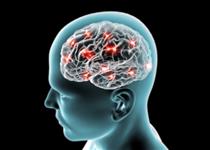Highlights
- •Human brain organoids integrate with the injured visual cortex of adult rats
- •Organoid grafts are synaptically connected to the host retina and visual system
- •Organoid neurons respond to host visual stimulation and adopt feature selectivity
Summary
Brain organoids created from human pluripotent stem cells represent a promising approach for brain repair. They acquire many structural features of the brain and raise the possibility of patient-matched repair. Whether these entities can integrate with host brain networks in the context of the injured adult mammalian brain is not well established. Here, we provide structural and functional evidence that human brain organoids successfully integrate with the adult rat visual system after transplantation into large injury cavities in the visual cortex. Virus-based trans-synaptic tracing reveals a polysynaptic pathway between organoid neurons and the host retina and reciprocal connectivity between the graft and other regions of the visual system. Visual stimulation of host animals elicits responses in organoid neurons, including orientation selectivity. These results demonstrate the ability of human brain organoids to adopt sophisticated function after insertion into large injury cavities, suggesting a translational strategy to restore function after cortical damage.
Introduction
Long-term neurological disability is commonly seen after traumatic brain injury,1 stroke,2 and other injuries to the cerebral cortex. The high burden of damage to the brain is due in large part to its limited repair capacity. While neurogenesis3 and axon regeneration4 occur in the adult mammalian brain, these processes are region restricted or limited and not robust enough to restore sufficient function in afflicted patients, particularly when large areas of the cortex are lost. Thus, there is a critical need to develop novel therapies for repairing cortical injuries.
Cell transplantation for the purpose of reconstructing cerebral circuitry remains one of the most promising approaches for restoring brain function. Rodent fetal cortex inserted into the cortex of adult rodents exhibit neuronal survival with extensive neurite outgrowth.5,6,7 These grafts integrate locally with the brain,6 and they appear to adopt brain network features after transplantation into the rodent visual cortex such as retinotopic maps and receptive fields.8 These results highlight the potential of using structured neural tissues to rebuild cortex. However, fetal cortical grafts have not gained traction as a viable translational option given the ethical concerns associated with procuring this tissue in humans.
Brain organoids generated via the self-organizing properties of the progeny of human pluripotent stem cells raise the possibility that cortical repair could be achieved with autologous or patient-matched neural tissues, a potentially translatable version of fetal cortical grafts.9,10 Organoids reproduce brain cell type diversity and architecture to a significant degree. Forebrain organoids develop outer radial glial cells, a distinctive feature of embryonic human cortex, and rudimentary laminar structure containing segregated upper- and lower-layer cortical neurons.11,12,13,14,15 Astrocytes,13,14,16 including human-specific astrocytes,14 and oligodendrocytes17 appear in these tissues at later time points, mirroring the timeline of normal neurodevelopment.
While current brain organoids do not fully replicate cortical architecture, they can be used investigate transplantation outcomes and guide efforts to improve organoid structure. Previous studies have shown the feasibility of transplanting human brain organoids into rodent hosts.18,19,20,21,22,23,24 Organoid grafts are rapidly vascularized by host blood vessels18,19,20 and send neuronal projections into the host brain with histological evidence of synapse formation.18,21,24,25
These results demonstrate anatomic integration of organoid grafts with the host brain. Recently, it was shown that injection of organoids into the intact early postnatal mouse brain led to significant functional integration with the somatosensory cortex.26 Less is known about the functional aspects of organoid graft integration with the injured adult mammalian brain. Optogenetic stimulation of organoid grafts induces local field potential (LFP) responses in the immediately adjacent host brain,18 and visual stimulation of host animals evokes simple LFP and multi-unit activity responses in the grafts.25 More sophisticated investigations of the functional integration of organoid grafts with systems-level networks in the context of the injured adult brain, which holds significance from a translational perspective, are needed, especially at the level of individual neurons.
Here, we sought to develop a deeper understanding of the integration of human cortical organoids with the adult rat visual cortex after transplantation into a large cortical injury. In addition to standard histological analysis of organoid grafts, we characterized the quantity and distribution of graft efferents and afferents, the latter using virus-based trans-synaptic tracing. The spontaneous activity of single units within organoid grafts was analyzed using high-density laminar multi-electrode probes. Taking advantage of the multiple tiers of neural activity present in the visual cortex, we evaluated evoked activity in response to different forms of visual stimulation of the host animal to determine the degree to which the graft had integrated with the host’s visual system. Organoid grafts survived robustly after transplantation with evidence of both efferent and afferent connectivity with the host brain in primarily a visual network-specific manner. We unequivocally showed the presence of a polysynaptic pathway between the retina of host animals and organoid grafts. Neurons within organoid grafts exhibited spontaneous activity, and a subset of these neurons responded to visual stimulation and were orientation selective. These results illustrate the degree to which cortical organoids can integrate with host brain networks after insertion into extensive injury cavities, on par with outcomes obtained from transplantation studies of dissociated neurons27,28 and organoids26 in the context of preserved cortical architecture. Moreover, they suggest ways to optimize the strategy of utilizing stem cell-derived neural tissues for cortical repair.
Results
Long-term organoid survival after transplantation into the injured adult rat visual cortex
Forebrain cortical organoids were generated from human pluripotent stem cell lines constitutively expressing green fluorescent protein (GFP) using a previously published protocol based on dual SMAD inhibition (Figure 1A ).13 Multiple cortical units with developing neuroepithelium could be identified early with increasing cellular density at later time points (Figures 1B and 1C). Within the cortical units, concentric layers of neural progenitors (Pax6+) and differentiated neurons (MAP2+) surrounded a central lumen (Figure 1D). Rudimentary cortical layers could be discerned at day 80 (d80; Figure 1E)….







